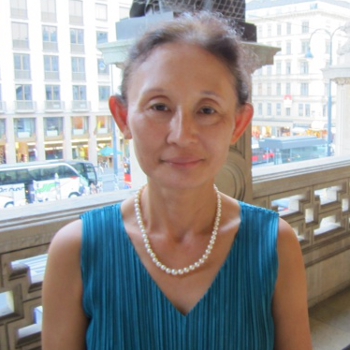Of the many Parsifal performances in Germany on Good Friday, it was a special joy to experience the legendary production in Mannheim that dates back to April 1957. Hans Schüler’s production is very much in the spirits of Wieland Wagner’s “new Bayreuth” tradition. Staging is simple, with a small mound in centre-stage serving as the base for the altar in Acts 1 and 3, and as Kundry’s “bed” in Act 2. Background projections show forests, Grail temple, Klingsor’s castle, flower garden and forests, all in painted abstraction. Lighting is minimal and in ombre grey in Acts 1 and 3, except for the Grail which is lit bright red. Klingsor’s castle in Act 2 is coloured in greenish-blue, while his garden was fused in rosy hues; Kundry’s seduction dress is black with shades of red.
The few props include an altar and two semi-circular pews for the Grail Knights. The Grail is lit golden yellow when it is raised by Amfortas and Parsifal in worship. The forest features tree stumps for Gurnemanz’s Act 1 narration and Parsifal’s baptism in Act 3. Costumes imply a vague Middle Ages setting, as the knights are in brown monk’s flock, and Kundry and the flower maidens appear in flowing long dresses. Parsifal, appearing first dressed as a hunter with bow and arrow, returns in Act 3 in a white flock symbolizing his special status among the knights. Stage action is limited. Flower maidens and their dancing sisters have well choreographed movements; the Grail Knights march and sing in unison. Kundry tries to seduce Parsifal on her knees, in bed.
It is all simple and straightforward, yet the whole performance was mesmerizing and moving. Dreamy scenery that seemed to make imperceptive changes in an instant in the Transformation Scene, as the screen was lowered and abstract images appeared in sequence in front of us, was transporting. Minimal movements of the singers as they stood and sang meant the audience was able to focus on their facial expressions, small gestures and voices to appreciate the characters’ psychological motivations. There were no subtitles; the acoustics of the theatre were such that every singer was clearly heard and their diction was exemplary. We were brought back to the “pre-subtitle, pre-updating” era of opera. I do enjoy modern productions of opera, in particular those that give me new insights and understanding of a piece, but this 61-year-old production is very much alive and vivid in its intensity. I found myself in tears at many points of the performance, thinking of many glorious singers of the past and present who graced it over the years, as the power of the production combined with the excellent music-making overwhelmed me.
Alexander Soddy led the Nationaltheater Orchester with brilliance, sensitivity and expertise, unexpected of his youth. From the very beginning of the Prelude, it was clear that we were in for a very special performance. Soddy breathed and moved with the music, and every note flowed as a smooth and inevitable part of an organic whole. Act 1 clocked in at a mere 1 hour and 45 minutes, and yet there was nothing in his music-making that was rushed or sloppy. In his meticulous interpretation, he uncovered melodies and phrases that often go unheard, such as the wave-like angulation of strings in the Prelude. He separated the brass section from the woodwinds, so they were on opposite sides of the pit; this created a splendid acoustical effect of differentiating the two sections. He was attentive to the singers throughout, giving them cues and mouthing words at times. The audience gave him and the orchestra the biggest ovation at the end.
Singers, mostly from the house ensemble, were well rehearsed and a pleasure to hear. Sung Ha’s Gurnemanz impressed with a deep bass that was even throughout the wide range of the role. His singing in Act 3 as Gurnemanz celebrated the return of the Saviour moved many to tears as his voice rose in unison with the brilliant brass. Thomas Berau as Amfortas and Joachim Goltz as Klingsor both brought their considerable experience to sing with passion and nuance. In the title role, Frank van Aken reminded us of a traditional Heldentenor with a bronze baritone timbre rising to the challenge of high notes in Acts 2 and 3. Angela Denoke, a seasoned Kundry, brought many vocal colours to depict a complicated character and her bright clear voice shone through.
Mannheim's Parsifal, with its traditional production and excellent music-making, was an unforgettable evening. Long live Hans Schüler's production, and the great Mannheim audience who refrained from applause after Act 1.




